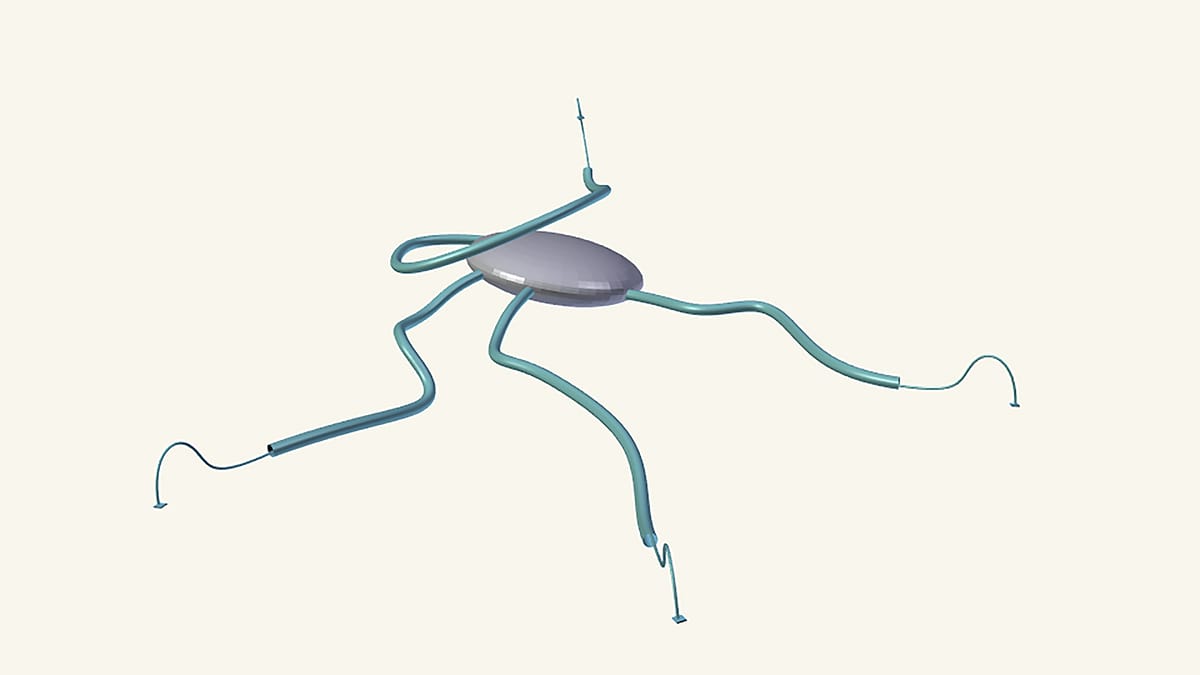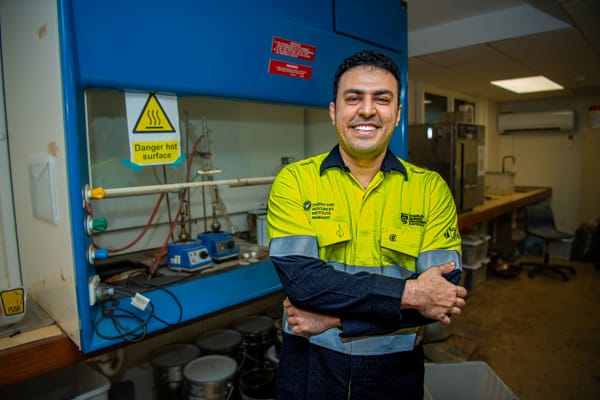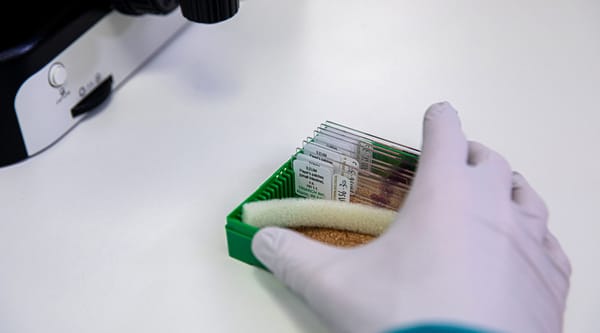Brain implants to predict and prevent seizures
Carbon Cybernetics has designed an implantable device that can measure activity in individual brain cells. The company is developing the device to predict and prevent epileptic seizures.

First published by the University of Melbourne
Key points
Carbon Cybernetics is one of a group of companies founded by University of Melbourne researchers to develop brain technologies for epilepsy treatment and diagnosis. The group also includes Seer Medical and Epiminder.
Instead of metal electrodes, the implant uses arrays of carbon-fibre electrodes. The electrodes are ignored by the immune system and small enough to record the activity of individual brain cells.
Carbon Cybernetics has developed a proof-of-concept implant to record high-resolution brain activity for predicting and preventing epileptic seizures.Key points
The outcome
Carbon Cybernetics has developed a brain implant for long-term monitoring of brain function. The implant is at the proof-of-concept stage. It is being developed to help predict and prevent epileptic seizures.
The implant uses an array of 32 flexible carbon-fibre electrodes. They are small enough to record brain activity from individual brain cells. Because carbon fibre is biocompatible, the implant does not provoke an immune response.
The company has sold its portable wireless electronics to neuroscience researchers for use in animal research. These electronics transmit the recordings from implants to a computer for analysis.
Carbon Cybernetics was founded in 2018 by four University of Melbourne researchers.
The need
As many as 50 million people worldwide experience epilepsy. Around one-third of them cannot control their seizures using medication. They also don’t know when a seizure will occur. This makes it difficult to avoid dangerous situations, hold down jobs, and make plans.
Current tools for predicting seizures typically use metal electrodes. They are placed on or under the scalp to record a person’s brain activity. However, these electrodes are relatively big. They can only measure average patterns of electrical activity across large regions of the brain. And they are not yet sensitive enough to measure electrical activity in enough detail for reliably predicting seizures.
To obtain higher-resolution recordings, ultra-thin electrodes must be embedded in the brain. But the presence of a foreign body usually triggers the immune system to attack. Over time, scar tissue can make an implant useless.
Highly sensitive brain implants that do not trigger an immune response are needed to monitor, predict and prevent epileptic seizures.
The research
The brain implant has its origins in work undertaken by Professor Steven Prawer, Associate Professor David Garrett and a team of researchers. They are experts in materials sciences, physics, chemistry, biomedical engineering, neural modelling and clinical neuroscience.
The team designed and built a bionic eye prototype to restore vision in people with retinal degeneration. The prototype included an external camera and a unit that converted images to data. It also included implantable electrodes, which used this data to stimulate nerve cells in the retina. The electrodes were made from carbon, which causes less inflammation and scarring than metal electrodes.
Following on from this project, the researchers continued to improve the performance of the electrodes. Team members Dr Nicholas Apollo and Dr Matias Maturana tested carbon fibre as a softer, more flexible material than the carbon used in the retinal electrodes. The researchers also developed a diamond coating that improved the ability of the electrodes to stimulate nerve cells.
Each diamond-coated electrode is 7 microns in diameter (about the same size as a typical human red blood cell). The electrodes vary in length from 0.5 to 3 millimetres. Each one is small enough to both stimulate and record signals from a single cell.
To stimulate and record from many cells at the same time, the team developed the technology to create an array of these electrodes. Covering an area of just 1 square millimetre, the array can be inserted into the brain via keyhole surgery. To date, the team has fabricated arrays of up to 32 electrodes.
Technology development history
By the end of the bionic eye project, the researchers recognised the potential for using the arrays to record electrical activity in the brain.
Seed funding from the University of Melbourne supported the development of the proof-of-concept device.
To further develop and commercialise the technology, Professor Prawer, Associate Professor Garrett, Dr Apollo and Dr Maturana founded Carbon Cybernetics in 2018. Dr Maturana is the company’s CEO.
Carbon Cybernetics began by designing a small electronics unit capable of wirelessly transmitting the data collected by the electrodes. The company has sold these portable units to neuroscience researchers for use in animal research.
To create a completely implantable device, the electronics need to be made even smaller. To do this, Carbon Cybernetics is collaborating with the University on an Australian Research Council (ARC) Linkage Project.
The aim of the project is to fabricate a device that can stimulate single brain cells and record how they respond. Atypical responses are a sign that the patient might be more prone to having a seizure. The data gathered by the device can therefore be used to better predict and prevent seizures.
As part of this project, the partners will design an application-specific integrated circuit (ASIC). An ASIC is a microcomputer on a single chip measuring around 1–2 square millimetres. It will control the device, allowing it to stimulate, record and wirelessly stream data to an external recording unit. Any intellectual property created as part of this project will be shared between the partners.
Carbon Cybernetics collaborates with Seer Medical, which has developed a wearable device for epilepsy diagnosis. Carbon Cybernetics will use the Seer Cloud, a web-based data management system, to store and analyse the data generated by its brain implant.
In July 2020, Carbon Cybernetics received $A1 million from the BioMedTech Horizons (BMTH) program. This program focuses on funding medical devices that address unmet clinical needs. The BMTH is part of the Medical Research Future Fund.
The funding will be used to support pre-clinical trials. The results of these trials will form the basis of human trials, which the company plans to begin in 2023. The trials will test the safety and long-term reliability of the brain implant. They will also test whether the implant is sensitive enough to collect the data needed for accurately monitoring, predicting and preventing epileptic seizures.
Carbon Cybernetics is one of a group of companies founded by University of Melbourne researchers to develop brain technologies for the diagnosis and treatment of epilepsy. The group also includes Seer Medical and Epiminder.
Partner
Funding
BioMedTech Horizons initiative, Medical Research Future Fund
ARC Linkage Project (LP180100638) – High-fidelity, long lasting, single-neuron brain machine interfaces
ARC Future Fellowship (FT190100215) – Carbon Cybernetics: Next generation tools for neuroscience
NHMRC Project Grant (1101717) – Long term carbon fibre dual stimulation / recording electrode arrays for closed loop neural implants
University of Melbourne Proof-of-Concept Fund
Patents
PCT/AU2018/051210, filed 9 Nov 2018
PCT/AU2015/000646, filed 28 Oct 2015
PCT/AU2012/000609, filed 31 May 2012
Publications
Hejazi MA et al. (2020) Hybrid diamond/carbon fiber microelectrodes enable multimodal electrical/chemical neural interfacing. Biomaterials 230: 119648. doi: 10.1016/j.biomaterials.2019.119648
Apollo NV et al. (2018) Development and characterization of a sucrose microneedle neural electrode delivery system. Advanced Biosystems 2(2): 1700187. doi: 10.1002/adbi.201700187
Tong W et al. (2016) Optimizing growth and post treatment of diamond for high capacitance neural interfaces. Biomaterials 104: 32–42. doi: 10.1016/j.biomaterials.2016.07.006
People
Associate Professor David Garrett
Dr Nicholas Apollo
Banner image: The central processing unit (grey in diagram) of the Carbon Cybernetics device sits under the scalp. Wires (teal) extend through the skull to the brain. Microscopic arrays at the end of each wire hold carbon-fibre electrodes that record activity from single brain cells.




